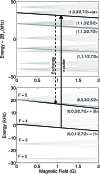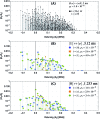Dipolar exchange quantum logic gate with polar molecules
- PMID: 30310615
- PMCID: PMC6115616
- DOI: 10.1039/c8sc02355g
Dipolar exchange quantum logic gate with polar molecules
Abstract
We propose a two-qubit gate based on dipolar exchange interactions between individually addressable ultracold polar molecules in an array of optical dipole traps. Our proposal treats the full Hamiltonian of the 1Σ+ molecule NaCs, utilizing a pair of nuclear spin states as storage qubits. A third rotationally excited state with rotation-hyperfine coupling enables switchable electric dipolar exchange interactions between two molecules to generate an iSWAP gate. All three states are insensitive to external magnetic and electric fields. Impacts on gate fidelity due to coupling to other molecular states, imperfect ground-state cooling, blackbody radiation and vacuum spontaneous emission are small, leading to potential fidelity above 99.99% in a coherent quantum system that can be scaled by purely optical means.
Figures





References
-
- Leung P. H., Landsman K. A., Figgatt C., Linke N. M., Monroe C., Brown K. R. Phys. Rev. Lett. 2018;120:020501. - PubMed
-
- DiVincenzo D. P. Fortschr. Phys. 2000;48:771–783.
-
- Brown K. R., Wilson A. C., Colombe Y., Ospelkaus C., Meier A. M., Knill E., Leibfried D., Wineland D. J. Phys. Rev. A: At., Mol., Opt. Phys. 2011;84:030303.
-
- Ballance C. J., Harty T. P., Linke N. M., Sepiol M. A., Lucas D. M. Phys. Rev. Lett. 2016;117:060504. - PubMed
LinkOut - more resources
Full Text Sources
Other Literature Sources

